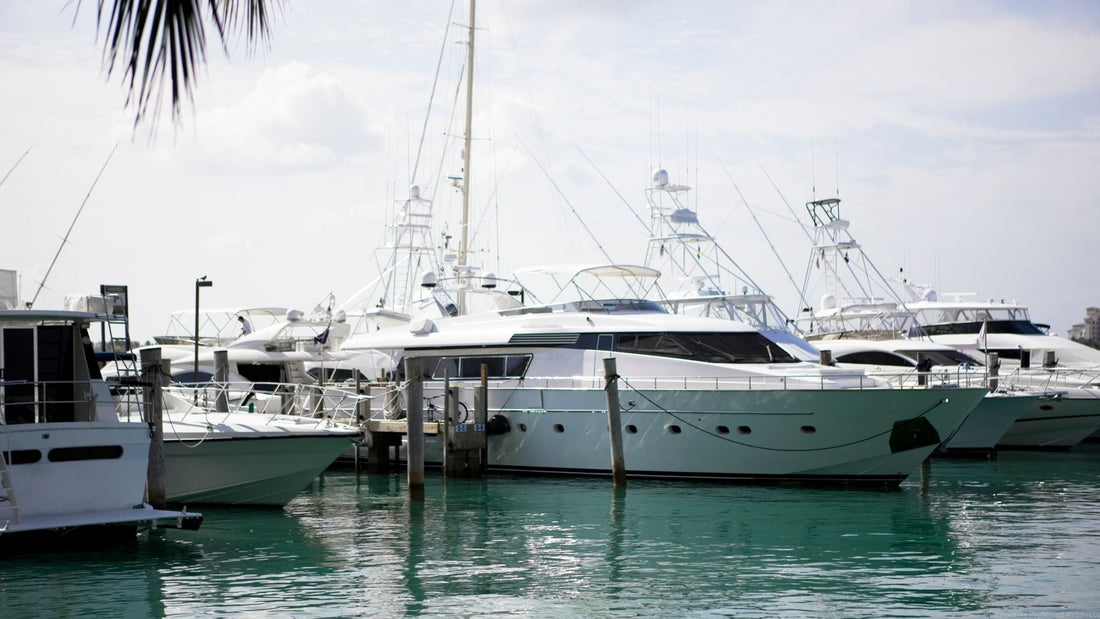
How To Prevent Dock Rash: Best Practices for Protecting Your Boat’s Hull
Nicholas HeislerShare
Dock rash might sound like a minor annoyance, but for boat owners, it can be a frustrating and costly problem. It's the unsightly scuffing, gouging, and scraping that occurs when your boat's hull repeatedly contacts the dock, often caused by rough weather, tidal movement, or improper docking techniques. Whether you're new to boating or a seasoned mariner, learning how to prevent dock rash can save your gelcoat, your wallet, and your peace of mind.
In this complete guide, we'll walk you through the best gear, techniques, and habits to keep your boat safe and your hull in top condition-so you can focus on enjoying your time on the water, not repairing fiberglass damage.
What is Dock Rash and Why Does It Matter?
Dock rash refers to the surface damage your boat sustains when it comes into contact with docks, pilings, or other hard structures. This usually happens while docking, undocking, or when your boat is tied up and shifting with the wind, wake, or tide. The contact may seem minor at the moment, but over time, repeated abrasions can wear through your gelcoat, expose fiberglass, or even cause deeper structural harm.
It's more than cosmetic. Damage from dock rash reduces your boat's resale value, creates opportunities for water intrusion, and often leads to costly repairs. Preventing it is far easier-and cheaper-than fixing it.
Choose the Right Docking Setup for Your Boat
Not all docking environments are created equal. The layout, exposure, and dock type can dramatically influence how much protection your boat needs.
Fixed vs. floating docks
Floating docks rise and fall with the tide, keeping your boat in a more stable position relative to the dock. These are often ideal for minimizing dock rash in tidal waters. Fixed docks, on the other hand, stay at a constant height and require more attention to line tension and fender placement.
Slip orientation matters
A slip that faces into prevailing wind or wave action will see more movement. Look for a sheltered slip with natural protection or one that allows your boat to align with the dominant conditions.
Distance between pilings and dock fingers
Tighter slips can mean more frequent contact with hard surfaces. If you have the option, choose a slip with adequate clearance for fenders to work effectively.
Essential Gear to Prevent Dock Rash
Your boat's protection starts with the right equipment. Cheap or poorly positioned gear is a common cause of hull damage.
Use High-Quality Boat Fenders
Boat fenders act as shock absorbers between your hull and the dock. But not all fenders are created equal.
Types of Fenders to Consider:
- Cylindrical (standard): Most popular and versatile. Hang vertically or horizontally.
- Round (ball-shaped): Ideal for larger boats and rougher water.
- Flat or contour fenders: Great for limited space or boats with unique hull shapes.
- Specialty fenders: Corner fenders or step fenders add protection in high-contact areas.
Fender Tips:
- Use one fender for every 10 feet of boat length, minimum.
- Position at the widest points-typically bow, midship, and stern.
- In tight slips, fenders hung horizontally can offer broader coverage.
- Choose the right size: a too-small fender compresses too easily and won't protect your boat properly.
- Learn more about how to properly tie a fender in our related blog
Invest in marine-grade fenders that resist UV damage and offer strong compression resistance.
Install Dock Edge Bumpers and Padding
If you own or lease a slip long-term, consider padding the dock itself.
Dock protection options:
- PVC or rubber dock edging: Covers the edges of dock fingers and pilings.
- Foam padding: Adds cushion and is often easier to install.
- Corner bumpers: Designed to absorb impact at high-risk points.
These upgrades protect not just your boat, but other boats and dock structures as well. Just be sure any modifications comply with marina rules.
Use Fender Boards for Tough Conditions
If you're tied up against pilings or a rough dock face, consider fender boards. These are long wooden boards hung horizontally between two or more fenders, spreading the force of contact across a wider area.
They're particularly useful in tidal areas where the boat rises and falls, causing fenders to move out of position. With a fender board, the protection stays consistent.
Proper Dock Line Techniques to Minimize Hull Contact
A good docking setup won't help much if your lines are sloppy. The way your boat moves in the slip depends on how it's tied.
Start with strong, marine-grade dock lines that are:
- Sized appropriately for your boat's weight and length (check our dock line size chart)
- Fitted with chafe protection at high-wear points
- Slightly elastic to absorb motion
Line Setup Basics:
- Bow and stern lines: Keep the boat aligned fore and aft.
- Spring lines: These are critical-they prevent the boat from surging forward or backward within the slip.
- Breast lines: Used when tying alongside a dock to reduce lateral movement.
Advanced Tools:
- Dock line snubbers or mooring compensators: These reduce strain and allow gentle give during wakes or wind gusts.
- Chafe guards: Use them anywhere your lines rub against cleats, chocks, or hardware.
Taut but not tight-that's the goal. Lines should prevent unwanted movement while still allowing for tide or boat sway.
Advanced Tips for Docking Without Damage
Master Safe Docking Techniques
Even with great gear, bad docking can still cause damage. Practice good habits:
- Approach slowly. The old saying goes, "Never approach the dock faster than you're willing to hit it."
- Use your fenders in advance. Have the crew prepare the fenders before entering the slip.
- Dock into the wind or current. Use natural forces to help you-not fight you.
- Communicate with the crew. Everyone should know their role, especially when pushing off or securing lines.
Consider Thrusters or Joystick Systems
If you're handling a larger boat in tight spaces, investing in a bow thruster or joystick control can make docking safer and more precise. These tools are especially valuable in windy or crowded marinas.
Reinforce or Install Rub Rails
Rub rails are the built-in bumper system of your boat. If yours are worn, cracked, or missing in key areas, you're more vulnerable.
Options Include:
- Vinyl rub rails: Common on many powerboats, easy to replace.
- Rope-style rub rails: Traditional on older or classic boats.
- Stainless steel: Sleek and durable, but more expensive.
Maintaining your rub rails means one more layer of protection between your gelcoat and the dock.
When to Upgrade Your Gear or Docking Setup
If you're already seeing signs of damage-scratches, fender rub-through, or deteriorating lines-it may be time to upgrade.
Watch for These Red Flags:
- Fenders losing air or becoming misshapen
- Dock lines that are frayed or overly stiff
- Persistent chafe marks in the same locations
- Difficulty keeping the boat still in the slip
You may also want to talk to your marina about moving slips if your current one is overly exposed to wind or wake.
Prevention now is far cheaper than gelcoat repair or fiberglass work down the line.
Routine Maintenance to Catch and Repair Minor Damage Early
Despite your best efforts, minor scuffs can happen. Staying ahead of them keeps small issues from becoming big problems.
Maintenance checklist:
- Inspect the hull regularly. Look for discoloration, scratches, or indentations.
- Clean and wax your boat often. This protects the gelcoat and makes it easier to spot damage.
- Use a gelcoat repair kit. For small dings and scratches, DIY kits are effective if you act quickly.
- Hire a pro when needed. Don't attempt structural repairs unless you know what you're doing.
The more proactive you are, the longer your boat's finish will last-and the less you'll spend in the long run.
Dock rash doesn't have to be a part of boating life. With the right gear, proper docking technique, and some smart upgrades, you can keep your hull looking pristine and avoid costly damage. Invest in high-quality fenders, secure your lines correctly, and take the time to dock with care-your boat (and your bank account) will thank you.




